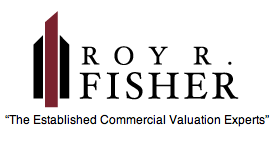If you are thinking about buying commercial property for the first time, the landscape can be daunting. Even if you already own several commercial properties, you may encounter new challenges. So then, what should you consider before making your next commercial property investment?
Investopedia defines commercial real estate (CRE) as “property that is used exclusively for business-related purposes or to provide a workspace rather than as a living space.” The main categories of commercial properties are office, industrial, multi-family, and retail. Because commercial real estate typically requires more capital than residential real estate, investing in it can be more difficult for individuals.
We have all heard the cliché, “Location! Location! Location!” applied to home buying, and the same is true of commercial real estate. In fact, it is the very first point the U.S. Chamber of Commerce recommends investors consider when looking to make a real estate purchase. However, location can be a bit more complicated for an investment property. The infrastructure surrounding your location can make a significant impact on your investment, too. If you buy a warehouse with the intent to lease it to an industrial tenant, you need to make sure the infrastructure is there for this type of user. For example, proximity to interstates or highways can be beneficial.
After you have determined the classification of a property, it is important to really get to know the building. As the U.S. Chamber of Commerce points out, you want to know what the building was previously, how much wear and tear has been done to the property, and what potential repairs are going to be necessary now and in the future. Major expenses often include repairing or replacing items like the roof, the parking lot, or the HVAC system. Our commercial appraisals can help with this kind of insight, but you should do your own research as well.
Once you have gotten to know the property, there are four types of commercial leases you as the owner can offer for investment purposes, according to MasterClass. We would also add a fifth type of commercial lease to their list.
- Single-net lease: Single-net leases make the tenant responsible for paying all property taxes for the duration of their lease.
- Double-net lease: Double-net leases make the tenant responsible for paying insurance and property taxes for the duration of their lease.
- Triple-net lease: Triple-net leases make the tenant responsible for paying insurance, maintenance, and property taxes for the duration of their lease.
- Gross lease: In a gross lease, the tenant only pays the rent, and the property owner pays all other related fees for the property.
- Full-service lease: An all-inclusive lease where the owner pays for in unit services (cleaning). These are often government leases.
If you have any questions about our commercial services, please contact us.



